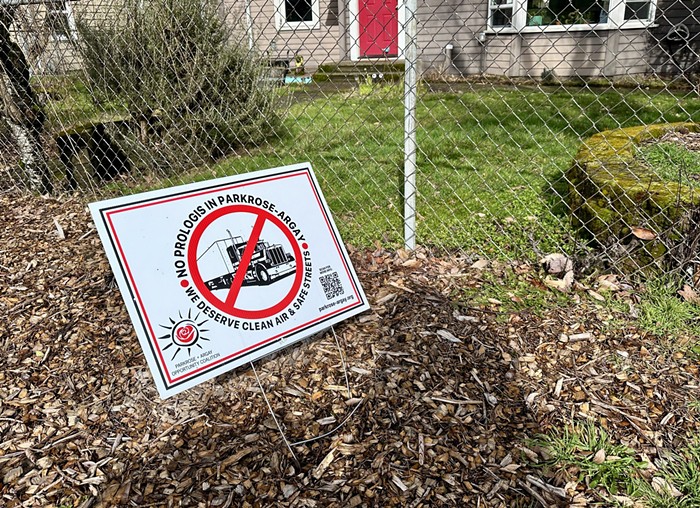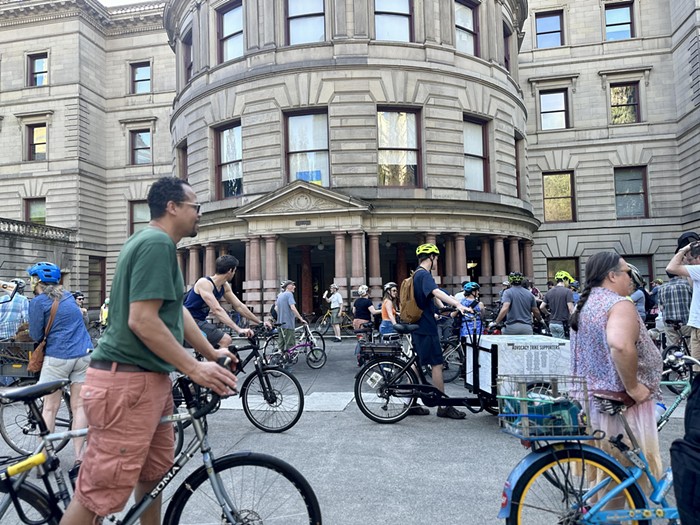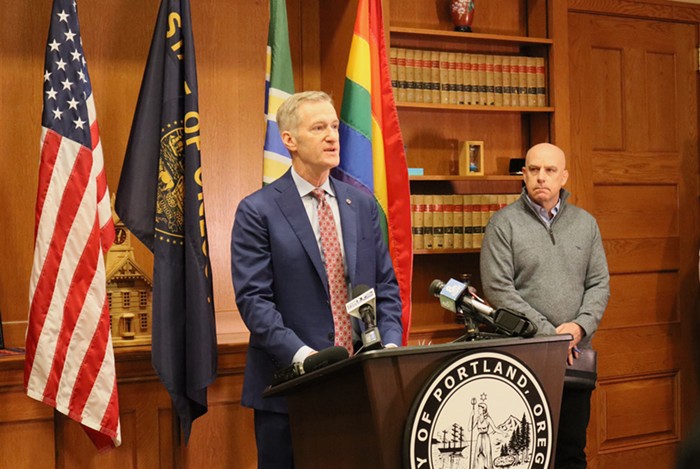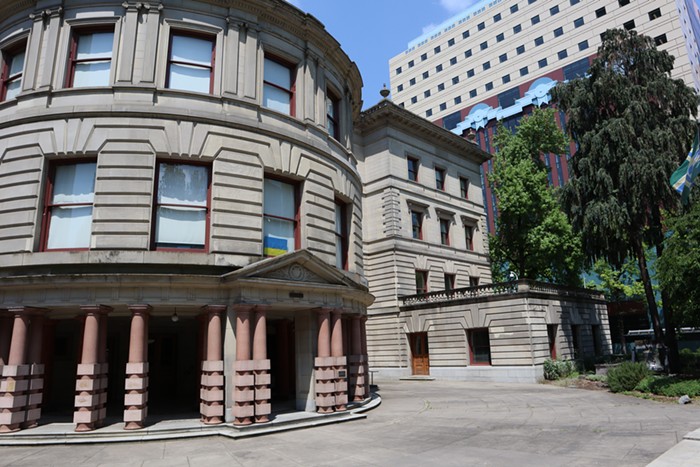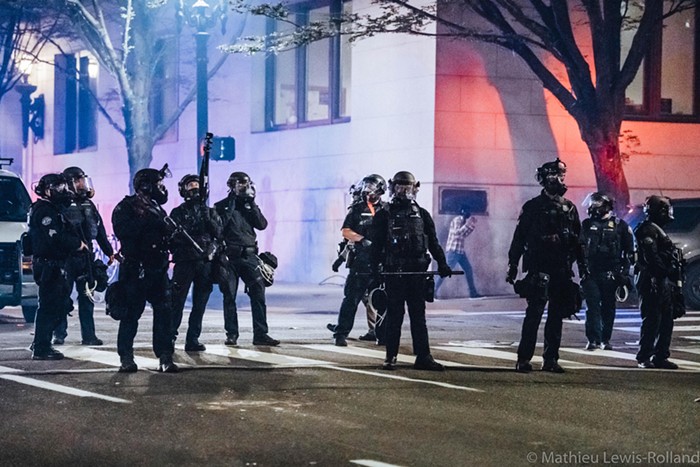
- Gov. John Kitzhaber's Office
It's only the first week of December, and already a powerful man with white facial hair has left local officials' wish list in tatters.*
In the budget he released on Monday, Gov. John Kitzhaber ignored the pleas of Oregon's most populous counties [pdf], who'd asked the governor to put way more money into his pet prison reform effort than it actually saved taxpayers.
Rather than the $66 million justice types in Multnomah, Lane, Marion, and Clackamas counties had asked Kitzhaber to kick toward local programs—urging a "sustained commitment" to funding a still-new effort—Kitzhaber has suggested $58.5 million.
That means Multnomah County could see $1.5 million less for local projects aimed at keeping criminals from reoffending.
The difference comes down to the dimmed forecasts around Kitzhaber's plan for slashing prison use. That plan was to ease up on certain crimes—minor robberies, low-level drug crimes, ID theft, driving with a suspended license—which would mean less people in Oregon prisons and money saved. The money could then be doled, in grant form, to each of Oregon's 36 counties, leading to innovative policies or just helping destitute counties cover the basics.
An early forecast showed the reform effort would shave $66 million in prison costs between July 2015 and June 2017. Then, a couple months back, it turned out that wasn't the case. Some of the more-lenient sentencing guidelines weren't taking effect like analysts predicted, and Oregon would be spending more than planned. (Until Monday no one was willing to say just how much, but we tried to guess using prison population forecasts and the average cost of housing a prisoner. We were wrong.)
Even so, justice officials asked Kitzhaber to stick to the initial $66 million figure. For meaningful reform to work, they argued, it had to be given a chance.
No dice. The governor's number crunchers estimate savings will be $7.5 million less than expected.
"The combined $58.5 million equals the projected correctional system savings during the 2015-17
biennium due to the implementation of provisions in House Bill 3194 (2013)," reads the governor's lengthy budget document [pdf].
Since Multnomah County's share of the money is roughly 20 percent, the local justice system may see around $11.7 million in grants over the course of this budget, as opposed to a hoped for $13.2 million. That's still a far cry from the $3.1 million Multnomah County received in the first round of grants, money that has gone mostly into figuring out which prisoners should go to prison, and which should get probation. And it represents millions more to fund stepped up drug and mental health treatments, housing, and job training in Multnomah County—resources that are vital to reducing crime.
The governor's budget is only the first step in the process. It still has to be whittled and shaped by next year's legislative session.
"The concern is that budget goes to the legislature," says Suzanne Hayden, executive director of the Citizens' Crime Commission. "That amount could be changed. My goal is to make sure it is retained in its entirety."
*I apologize for this lead. Sometimes you've got to take the shot, you know?
